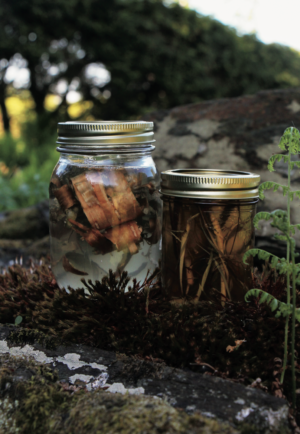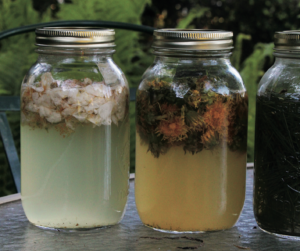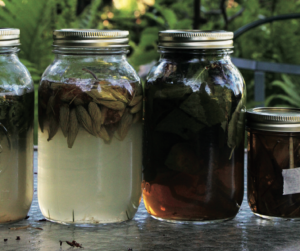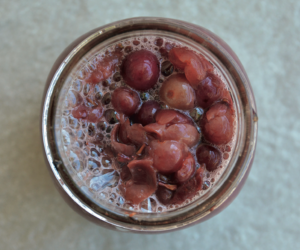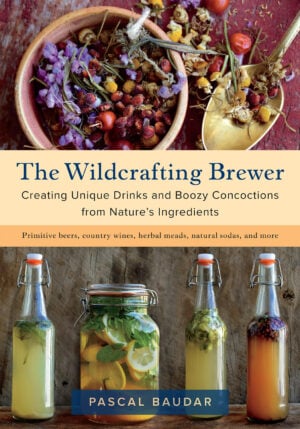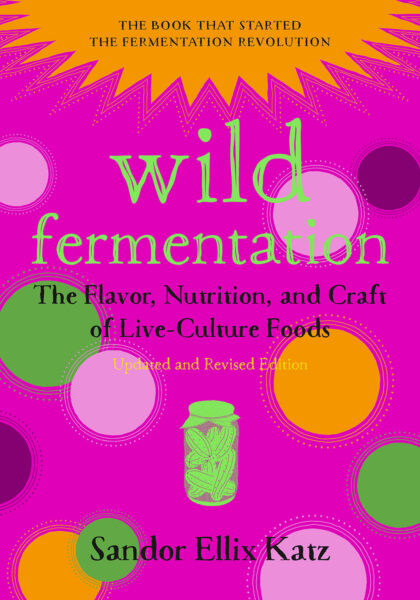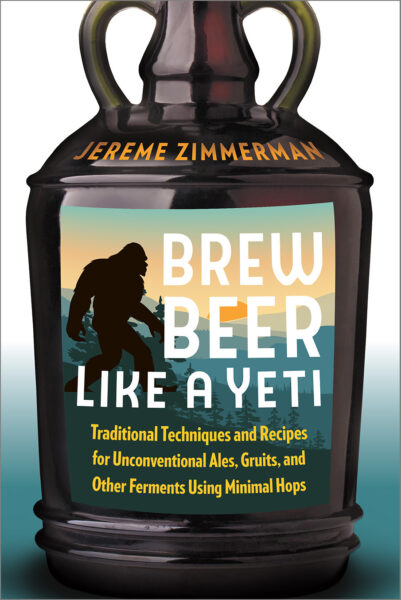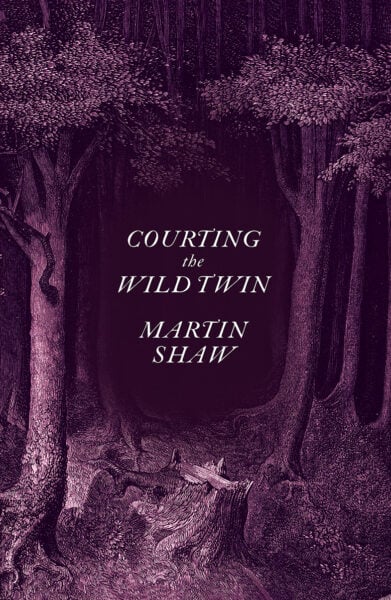In Search of Wild Yeast: Using Foraged Yeast to Create Your Own Brews
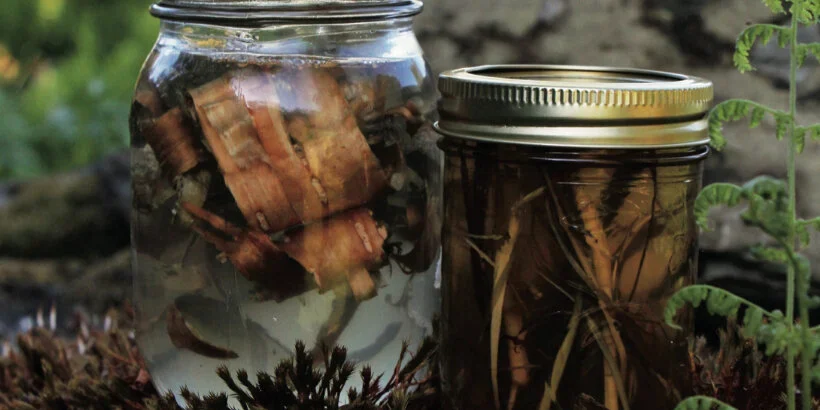
Since the dawn of humanity, people have enjoyed a deep relationship with yeasts. You may not realize it, but yeast spores are present everywhere. They’re in the air we breathe; in plants, flowers, fruits, and soil; and even on our skin. And, perhaps more importantly, yeast is a key ingredient used in making alcoholic drinks. More than 1,500 types of wild yeast have been recorded so far, but thousands more are waiting to be discovered. It’s these unknown varieties that can produce some truly unique brews.
There is something special about being able to create an interesting drink using only hyperlocal ingredients from your own garden or the nearby wilderness. You can taste the local terroir in every sip and take pride in knowing you have created something one-of-a-kind. A note: As is the nature of wild yeasts, which are invisible and mysterious, the final product can often be unpredictable, and yet, the fermentations they create are full of surprises and most often delicious.
The following excerpt is from The Wildcrafting Brewer by Pascal Baudar. It has been adapted for the web.
(Photographs courtesy of Pascal Baudar unless otherwise noted.)
Searching for Wild Yeast
Let’s start with a simple definition: Yeast is a type of fungus that is used in making alcoholic drinks (such as beer, wine, or mead) and in baking to help make dough rise.
Basically, what yeast does is convert sugar into alcohol and carbon dioxide gas (CO2). In fact, if you take a look at the origin of the word yeast, you’ll discover that it comes from the Old English gist and Old High German jesen or gesen, which mean “to ferment.”
Most people who are into making beers or sodas will purchase their yeast online or at their local brewing supply store. I’m not a commercial yeast expert, but basically the type of yeast that you use will imbue some specific flavors to your brew and also determine the percentage of alcohol you can expect after a full fermentation. I’m much more into what nature is offering me, so I tend to use wild yeast.
You may not realize it, but yeast spores are present everywhere. They’re in the air we breathe; in plants, flowers, fruits, and soil; and even on our own skin. As I continue experimenting with brewing, I keep finding more and more sources of wild yeasts. For example, last year, while I followed an old recipe for unripe pinecone syrup, I found out (after my jar exploded) that my pinyon pinecones were completely loaded with wild yeast. So much so that I actually brewed some primitive beers by just placing unripe pinecones in the cold wort to ferment, and it worked like a charm. (Wort is a brewing term: It refers to the sweet infusion of herbs, ground malts, or other grains before fermentation, used to produce beer.)
When I taught a fermentation workshop at Sterling College in Vermont, I had the students experiment with wild yeast starters: They mixed some organic ingredients such as barks, leaves, flowers, and branches in sugar water. To my surprise, over 80 percent of the starters actually worked. Some of them were made with very unusual ingredients such as white pine branches, yellow birch bark, fern leaves, spruce tips, apple blossoms, and so on.
We ended up using a couple of starters that were super active (spruce tips and dandelion flowers). I decided not to use the most active one (fern) because, not being an expert about plants in Vermont, I didn’t know enough about that type of fern. I found out later it was called sweet fern (Comptonia peregrina) and that it can be made into a tea. In retrospect, we could have used it. I also skipped the apple blossom starter when a student raised the question of cyanide (which is present in many fruit seeds, including apple, in small amounts). But further research indicated that it would not have been an issue. My philosophy is always to err on the side of safety. I also tell my students to start with something they actually know is not poisonous or unhealthy, and that a successful starter should smell good, too.
More than 1,500 types of wild yeast have been recorded so far, but thousands more probably exist in the wild waiting to be discovered and recorded.
Since the dawn of humanity, people have enjoyed a deep relationship with yeasts. In his book Uncorking the Past, author Patrick McGovern wrote about the first evidence of making an alcoholic beverage, which came from chemical analysis of jars from the Neolithic village of Jiahu in the Henan province of northern China. The results of the analysis confirmed that a fermented drink made of honey, rice, grapes, and hawthorn berries was being produced around 7000 BC.
Beermaking evidence has been found in present-day Iran on jug fragments that were at least 5,000 years old. And we also know the Egyptians made leavened breads using wild yeasts (sourdough) around 1000 BC based on hieroglyphs.
As science continues to improve and more ancient artifacts are retrieved, I’m sure we will find evidence of other peoples having made interesting alcoholic beverages much earlier in our history. Considering that the simple action of mixing raw honey (which contains a lot of wild yeasts) with water can create a natural fermentation within 3 or 4 days, it’s highly likely that fermented drinks existed long ago in prehistoric times.
Until modern science came along, the invisible wonder of a liquid transforming itself into a magical solution capable of altering your senses was perceived as a divine intervention, often the domain of shamans and priests. In many cultures alcohol was considered a gift of the gods: Songs were written praising its virtues, and divinities such as Dionysus or Bacchus, god of the grape harvest and winemaking, were worshipped.
Primitive societies had many rituals revolving around this miraculous transformation. Some had rites that called for dances, chants, and noisemaking to attract spirits so they could inoculate the brew, while in other cultures calm and silence were the norms so as to not scare the spirits away.
The creation of wild brews can often be unpredictable. Such is the nature of wild yeasts, which are invisible and mysterious. At the same time the fermentations they create can be full of surprises and often delicious.
Primitive beers, wines, or even sodas made with wild yeasts can have ever-changing qualities due to countless factors such as the season, location, and yeast sources (plants, berries, and the like). While some people are nervous or disturbed by this lack of control, culinary adventurers see it as a blessing. Alcohol content, acidity, brightness, smoothness, and many other factors influencing the flavors will fluctuate in the same way nature does— sometimes unpredictably and esoterically. It is a true reflection of a wild, untamed terroir.
The modern trend in making beers or wines is to use specific commercial yeast strains that provide desirable and predictable results. For example, champagne yeast allows you to make fermented beverages with a high alcohol content. Some yeast strains can also be chosen for the flavors they impart, their speed of fermentation, or their ability to withstand low temperatures. If I ferment my wild beers using a commercial yeast, I tend to use a very plain dry yeast like Nottingham ale yeast. There is a lot to know about which types of yeast to use if you’re an experienced brewer, but you can start with a basic yeast strain like the one I use.
If I don’t use wild yeast (which is rare these days), I do the following:
• Use beer yeast for my regular and wild beers.
• Use champagne yeast for sodas.
• Use wine yeast when fermenting wild berries, grapes, elderberries, and the like.
Don’t use a bread yeast for brewing beers or sodas, as the end result will have bread-like flavors. I guess it could be a good thing if you really like bread, but I don’t find the flavor very appealing in a beer-like drink.
Commercial yeast strains are also designed to achieve higher levels of alcohol. Results will vary somewhat, but as a general rule commercial beer yeast can give you around 10 to 12 percent alcohol, wine yeast around 12 to 13 percent, and champagne yeast 13 to 15 percent. And of course specific types of yeast can give you a much higher percentage of alcohol, such as White Labs Super High Gravity yeast (over 20 percent alcohol).
The old trend (which by the way is becoming popular again) is to experiment with what nature has to offer, but wild yeast usually doesn’t have the same tolerance for higher levels of alcohol as commercial yeast. Most wild yeast will die at around 5 to 6 percent alcohol, although I’ve had some wild yeast going higher, such as the yeast from my local elderberries.
Presently, I would say that 75 percent of my brews are made with wild yeasts. Late spring and summer are the best times to forage these microorganisms, as they are attracted to sugars and we have a lot of berries ripening in California during those seasons—elderberries, wild grapes, and juniper berries, to name a few. These days I’m also completely in love with unripe pinyon pinecones as starters.
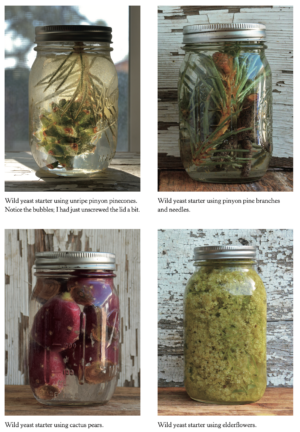 Good Sources of Wild Yeasts
Good Sources of Wild Yeasts
• Grapes, plums, fruits that have a white bloom. From your garden or farmer’s market. Make sure they’re organic.
• Gingerroot. This must be organic—most of the ginger I find locally is imported from China and doesn’t work for fermentation. I suspect it’s been irradiated to kill potential microorganisms and insects.
• Fresh wild juniper berries. Note that not all juniper berries are edible.
• Elderberries
• Wild grapes
• Elderflowers
• Blueberries
• Blackberries
• Figs
• Prickly pear fruits
• Tree barks—birch (Betula spp.) and aspen (Populus spp.). Yellow birch bark (Betula alleghaniensis) works, too, but I think it should be collected in late spring or early summer.
• Unripe pinecones. My pinyon pinecones were loaded with yeast, and many people have reported excellent results using unripe pinecones from their local pines. You’ll need to experiment a bit.
• Pinyon pine or white pine branches. It’s likely that other species of pines are suitable as well, but I haven’t experimented with them yet.
• Raw honey
A lot of unwashed organic fruits (apples, peaches, lemons, et cetera) are also excellent sources of yeast. Make sure they’re organic and clean (not grown in a polluted environment and sprayed with chemicals).
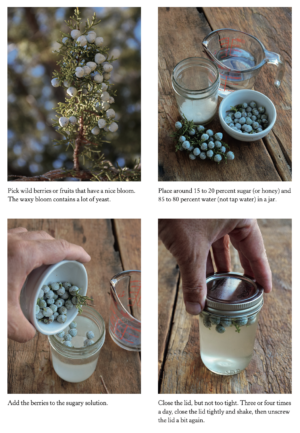 How Much Starter Do You Need for Brewing?
How Much Starter Do You Need for Brewing?
I usually use around 1/2 to 3/4 cup (120–180 milliliters) of yeast starter per gallon (3.78 liters) of beer or soda. Some recipes I’ve seen online use 1 cup (250 milliliters) per gallon. The consensus seems to be somewhere between 1/2 and 1 cup.
Note that some yeast starters, such as pinyon pine or juniper berries, may add flavors to your brew. This isn’t excessive, though. You can create some yeast starter mixes specifically to accentuate or add character.
Unlike commercial yeast, wild yeast may still require 2 to 4 days to take off in your wild beer or soda. If the recipe calls for 10 days of fermentation, you would start counting the days when the fermentation is quite active.
I’ve also been successful with getting some of my wild brews to ferment by simply adding ingredients loaded with wild yeast into the liquid (wort), such as pinyon pinecones or juniper berries. I remove them when the fermentation is doing well.
Wild Yeast Summary
If you’re new to making beers, sodas, or wines, I advise you to start with cultured commercial strains of yeast. It’s much easier for you to learn; try various recipes and achieve success the first time around. Also, if you’re into making alcoholic beverages with high levels of alcohol, this is probably your best bet. Regular brewing yeast (beer, wine, or champagne) can be purchased in liquid or dry form at a local brewing supply store or online.
As you gain experience, or if you are already an experienced brewer, start to play with wild yeast—a fascinating and truly enjoyable experience. There is something special about being able to create an interesting alcoholic drink using only hyperlocal ingredients from your own garden or the local wilderness. I believe I can truly taste the local terroir in some of my brews.
Besides, going foraging for and experimenting with wild yeast sources and making starters is such a fun activity. If you’re a teacher, it’s a great way to educate kids on nature’s wonders.
Recent Articles
Chances are, you’ve seen cattails growing on the edge of your local lake or stream at least once or twice. Instead of just passing these plants, try foraging for and cooking them to create delicious seasonal dishes! The following excerpt is from The New Wildcrafted Cuisine by Pascal Baudar. It has been adapted for the…
Read MoreGarlic mustard: while known as “invasive,” this plant can be consumed in its entirety and has great nutritional value. Plus, the garlic-flavor is a perfect addition to any recipe that calls for mustard! The following are excerpts from Beyond the War on Invasive Species by Tao Orion and The Wild Wisdom of Weeds by Katrina…
Read MoreOh, honeysuckle…how we love thee. If only there was a way to capture the sweet essence of this plant so we could enjoy it more than just in passing. Luckily, foraging and some preparation can help make that happen! Here’s a springtime recipe that tastes exactly like honeysuckle smells. The following excerpt is from Forage,…
Read MoreIntroducing…your new favorite brunch dish! This whole broccoli frittata is packed with fresh, wildcrafted flavors that are bound to help you start your day off on the right foot. The following is an excerpt from The Forager Chef’s Book of Flora by Alan Bergo. It has been adapted for the web. RECIPE: Whole Broccoli Frittata…
Read MoreWondering where to forage for greens this spring? Look no further than hedges, which serve as natural havens for wild greens and herbs! The following is an excerpt from Hedgelands by Christopher Hart. It has been adapted for the web. Food from Hedges: Salads and Greens Let’s start by looking at all the wild foods…
Read More

